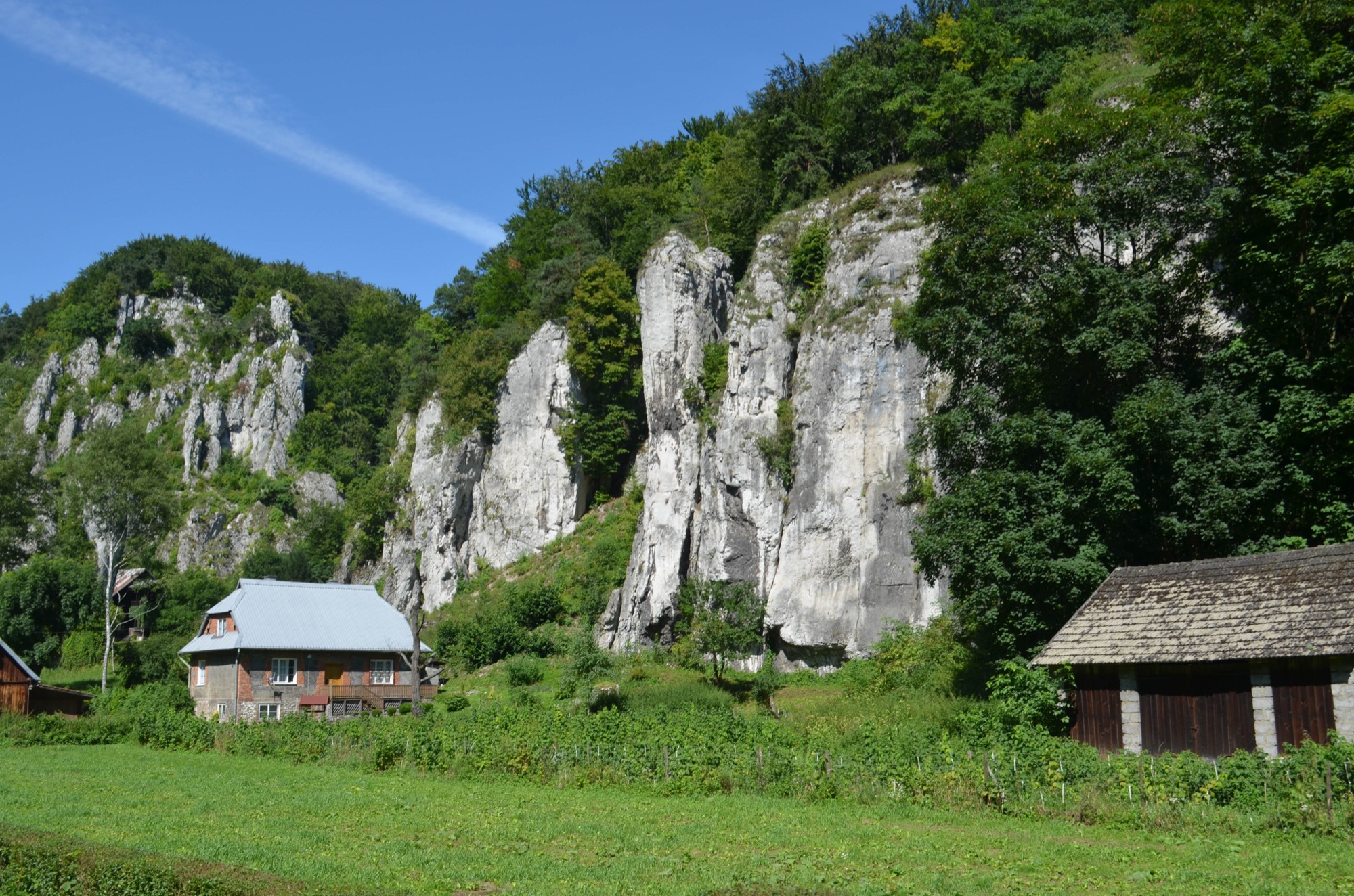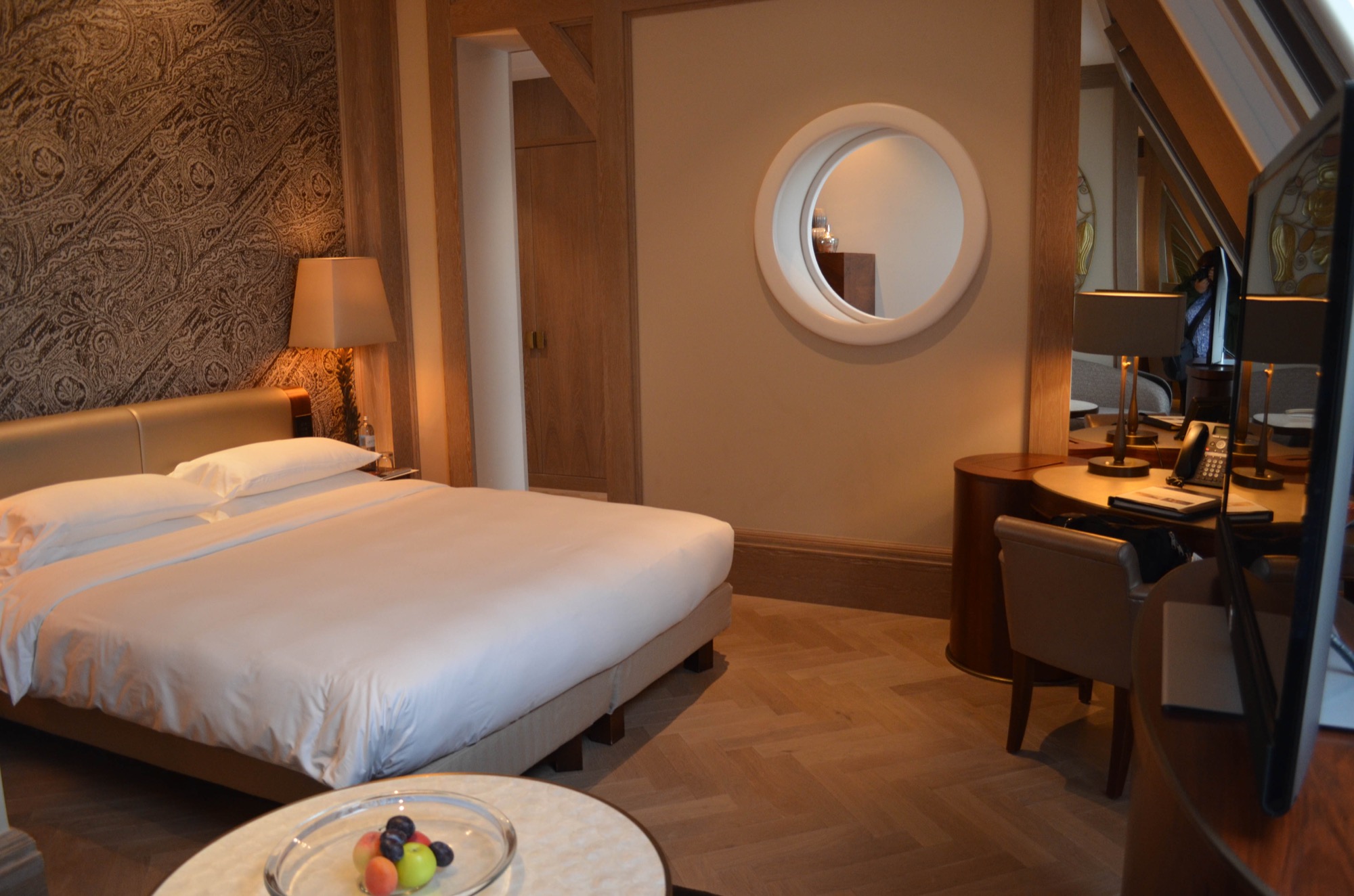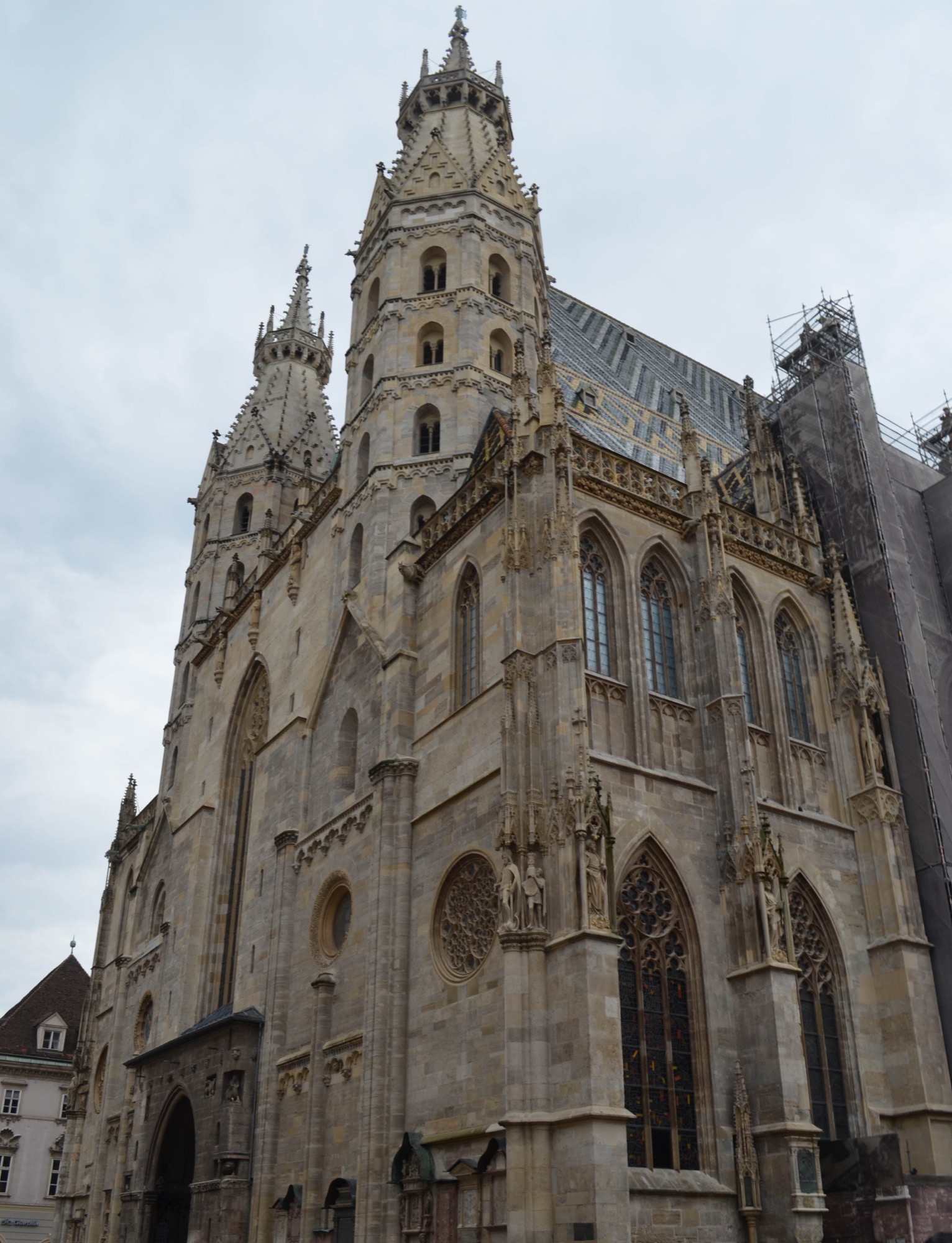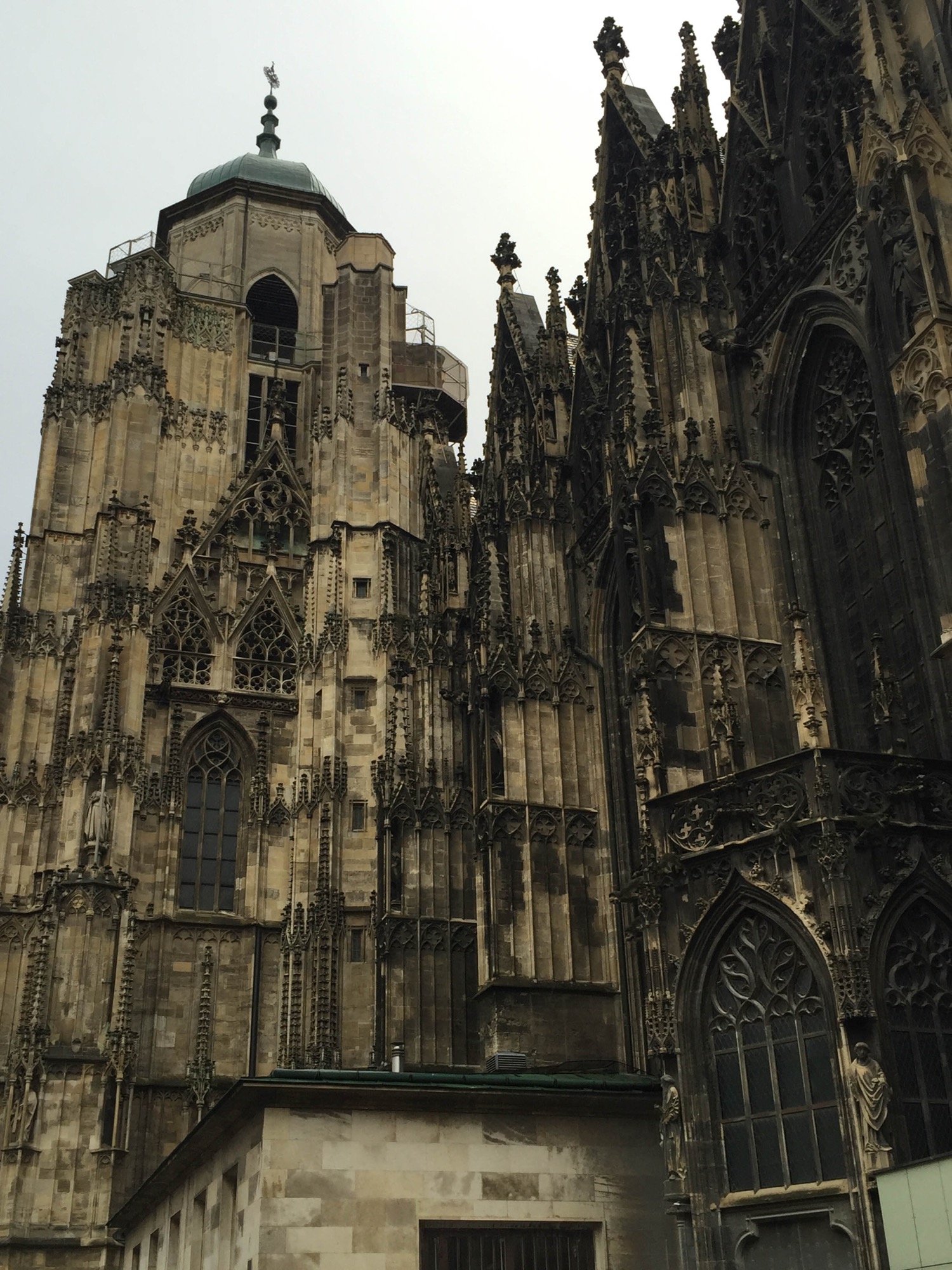We came upon some delightful random sights while hiking through Ojcow National Park.
We were hiking along a rocky trail that wound through the forest, with a steady uphill incline. We were on our way to the cave, when suddenly we came to a small clearing with benches and a lady selling pickles.
Once we reached the cave, there was a gate covering the entrance that was shaped like a spider web. The legend says that when the king hid in the cave, a spider wove a web across the entrance and this hid the cave from the king's pursuers.
As we reached the outskirts of the park, there was a small road leading back to the parking area. There was a horse drawn buggy there that provided a delightful way for us to finish our hike.











































